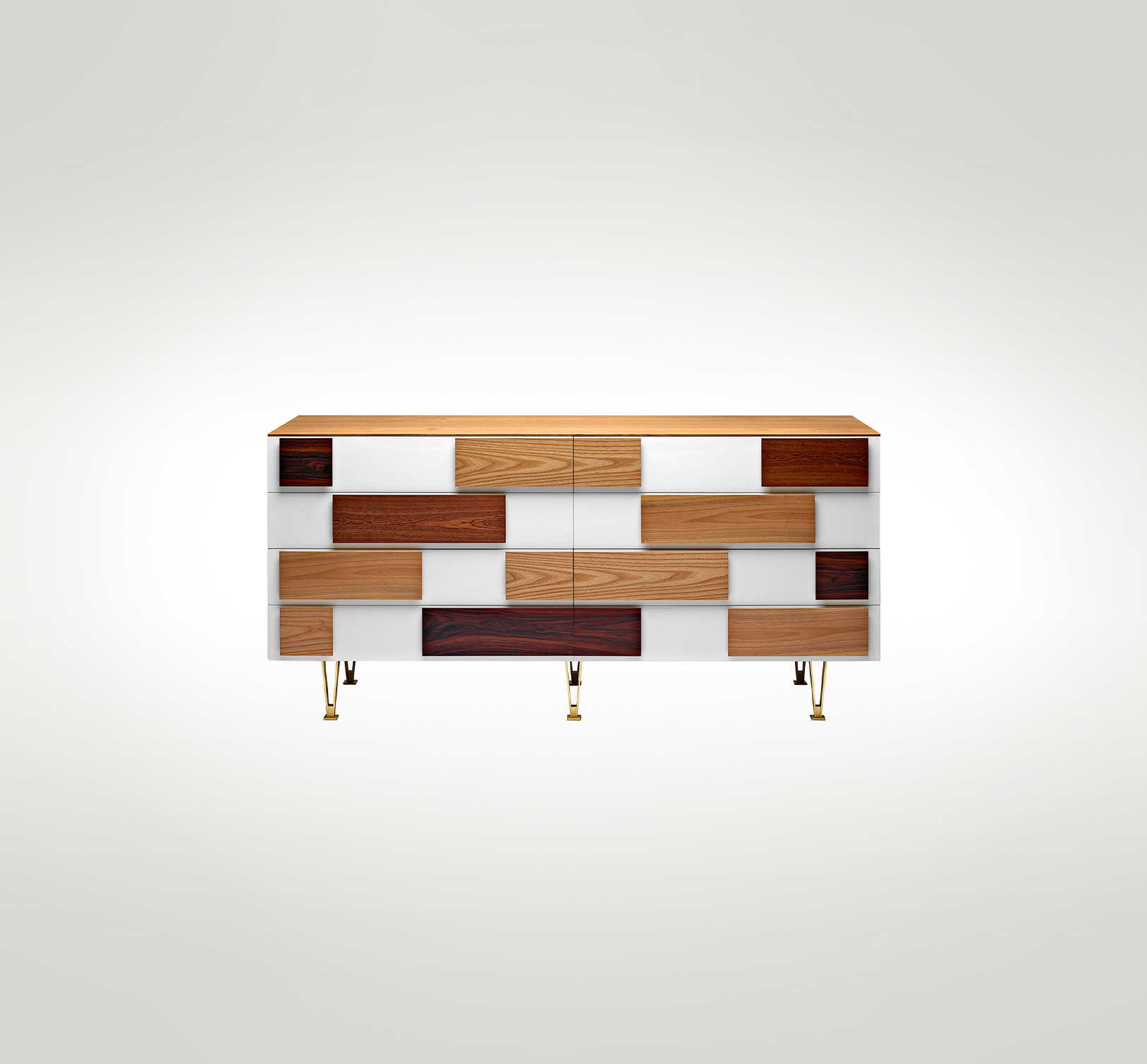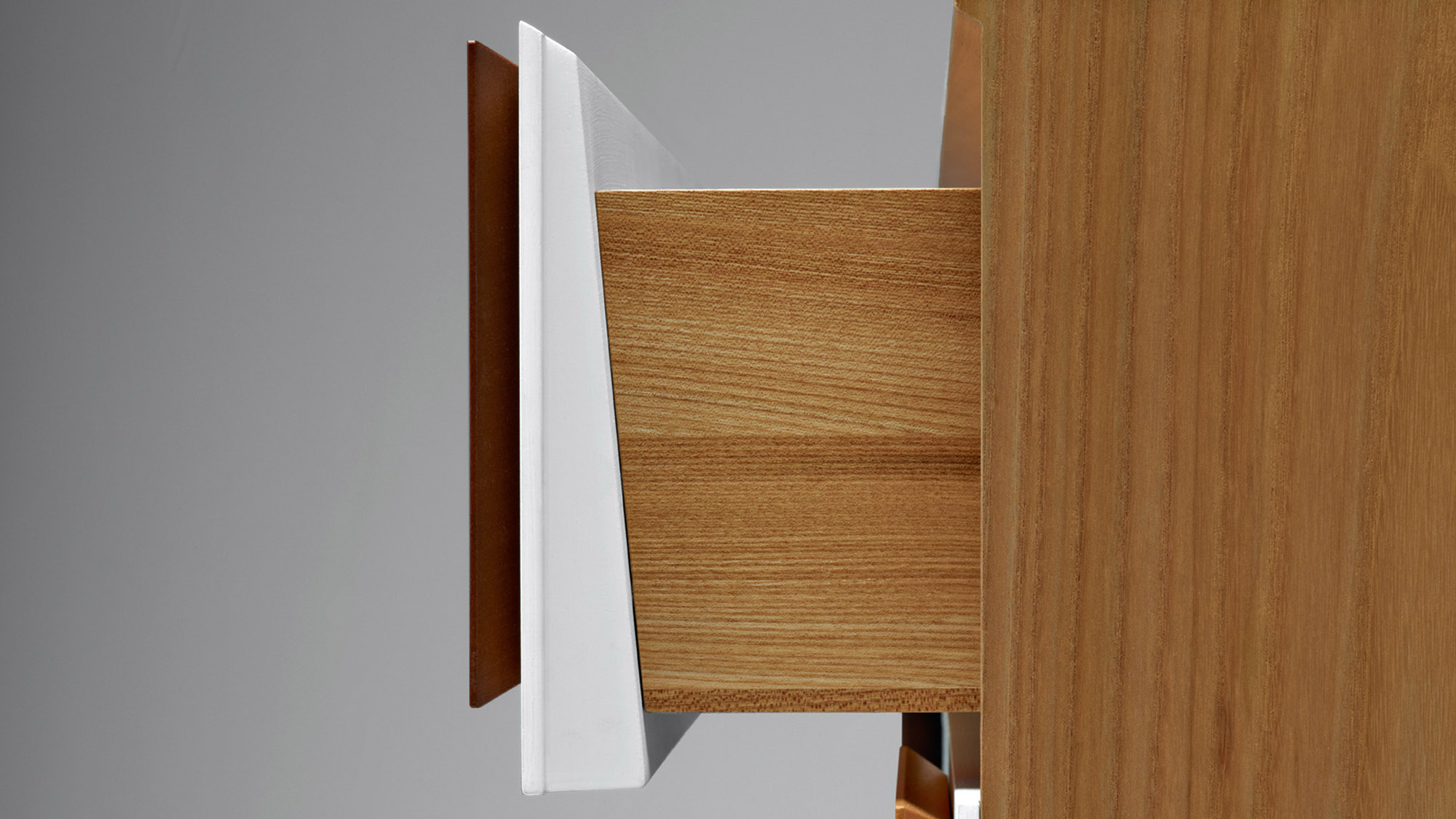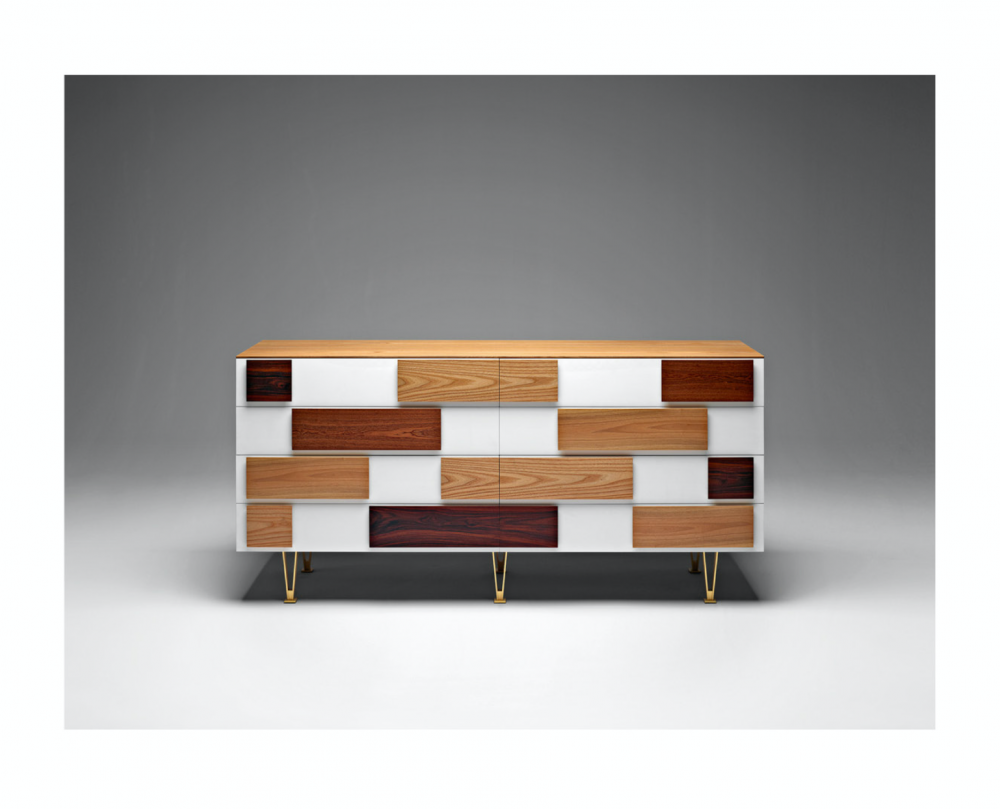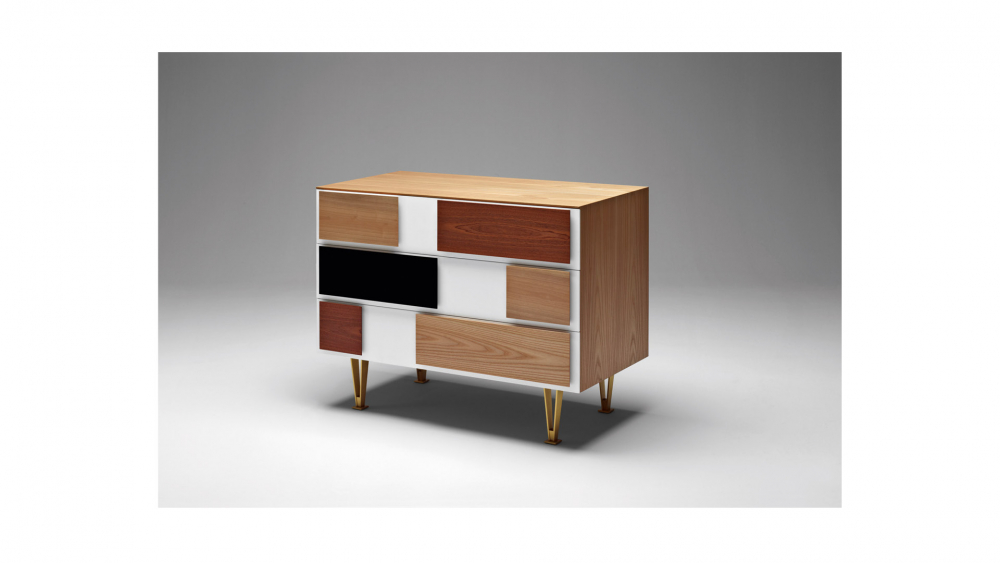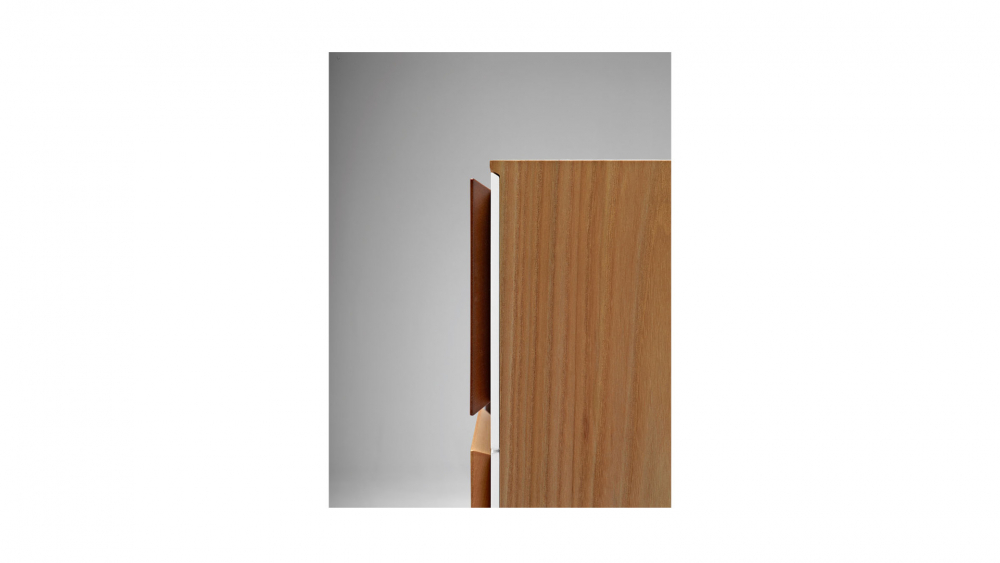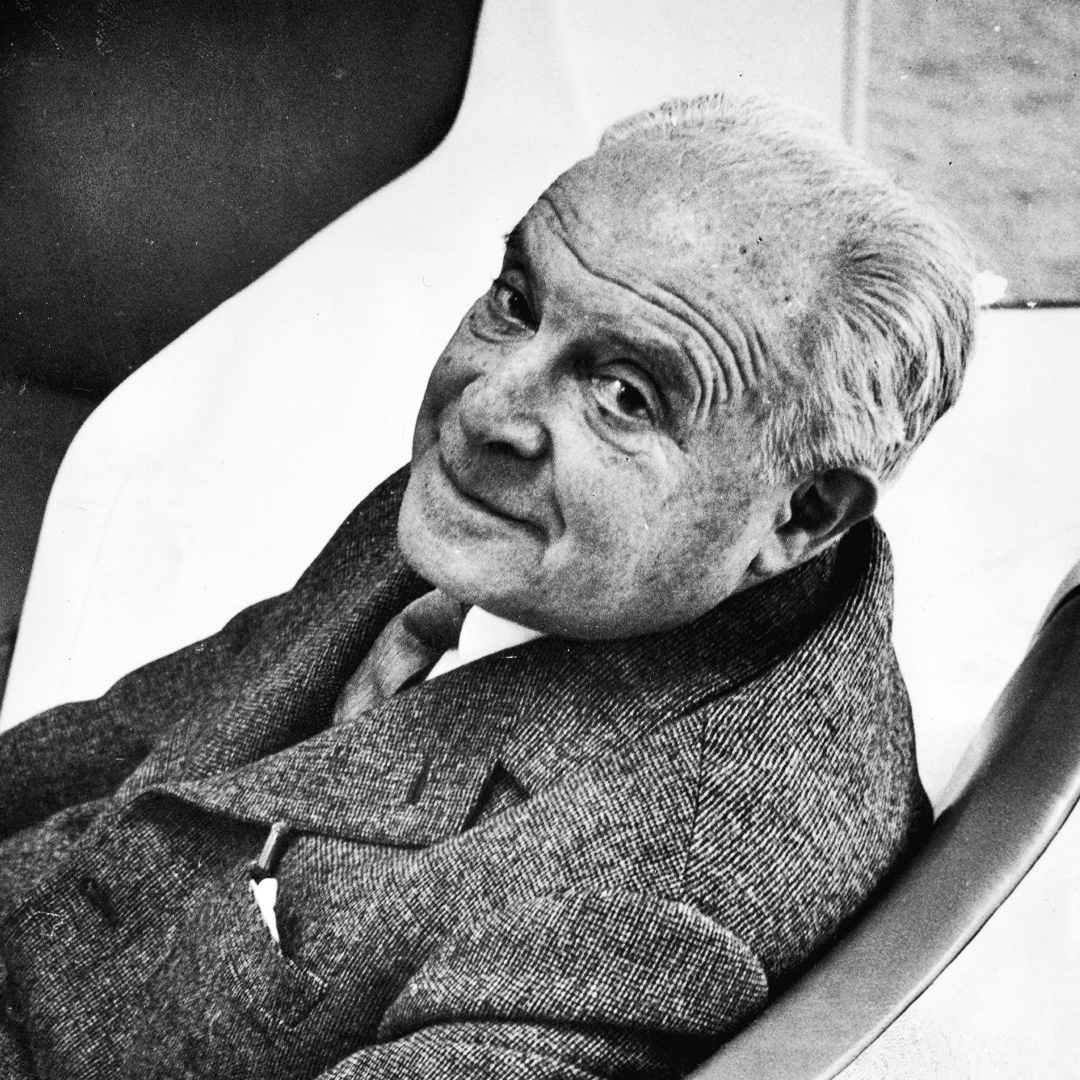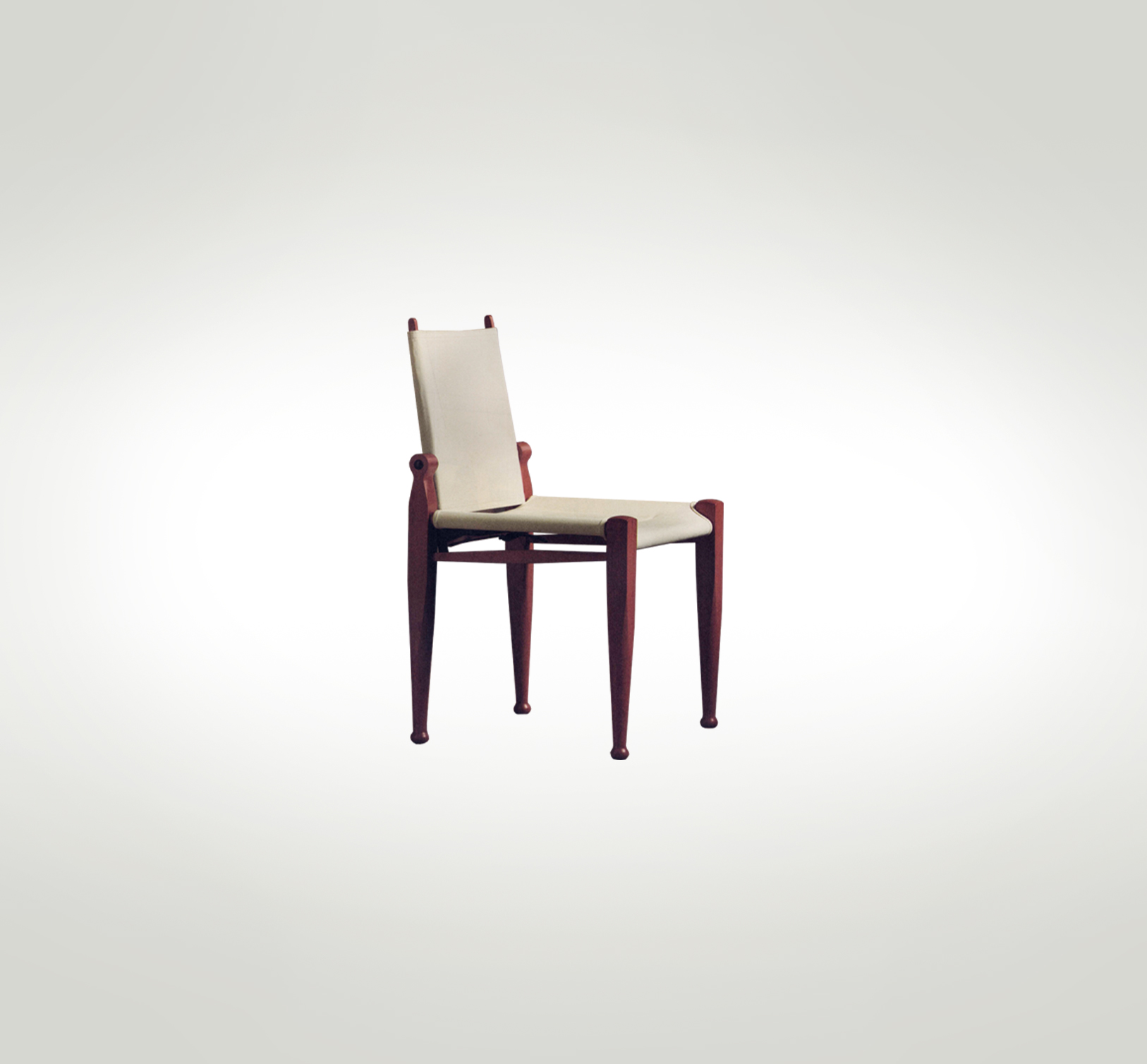Dresser
Dresser designed in several versions between 1952 and 1955. It features white hand-painted drawer fronts with applied handles made of elm, Italian walnut, mahogany and rosewood. “Wood is a wonderful material that you can do everything with. My love affair with wood has changed over time. I’ve been passionate about Ferrara wood burr bleached with oxygenated water and placed diagonally with clever inlay work... one minute I love ash and then I am in love with elm” (Gio Ponti, “Stile Industria”, 1958). The elm wood structure rests on satin-finish brass feet.
